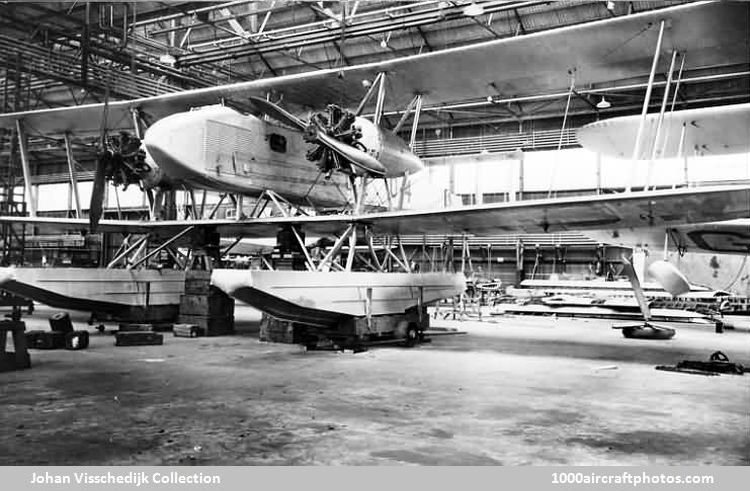11/30/2008. Remarks by Johan Visschedijk: "Only three Vellore transports were produced in single and twin-engined versions:
134 Vellore I. Ordered by the Air Ministry in 1926 under s/n J8906, powered by a single 515 hp Bristol Jupiter IX nine-cylinder radial engine it flew for the first time at Brooklands on May 17, 1928. By June 30 it had been registered as G-EBYX. Early 1929 it was re-engined with a Armstrong Siddeley Jaguar VI, and subsequently used by Vickers for a long-distance proofing flight to Australia. Leaving the UK on March 18, 1929, the wing and landing gear were damaged at Mersa Matruh, Egypt in a forced landing due to engine problems. April 28 the aircraft had been repaired and the aircraft arrived at Cape Don, near Darwin, Australia on May 29, 1929 where the aircraft was wrecked in the landing.
166 Vellore II. Designed to Air Ministry Specification 5/30 for a mail carrier, converted before flight into the Vellore IV.
172 Vellore III. Powered by two 525 hp Jupiter XI engines, and registered G-AASW, it was flown for the first time at Brooklands June 24, 1930, by Mutt Summers. In 1932 it was fitted with floats by Supermarine at Southampton, carrying the 'Class B' marking O-4, the aircraft was flown from Southampton Water in March 1932, by Henri Biard, Chief Test Pilot of Supermarine, and Mutt Summers. The aircraft was scrapped in 1934.
(Note: while the O-4 registration can be seen on the fuselage behind the engine, part of the original registration
G-AASW is visible under the wing.)
173 Vellore IV. The aircraft was finished as a Service transport (the mail carrier plans were shelved). Registered as G-ABKC on March 23, 1931, it was serialed K2133 by August 1931. Powered by two 515 hp Jupiter IX engines, it was used by the A&AEE at Martlesham till February 1935."
